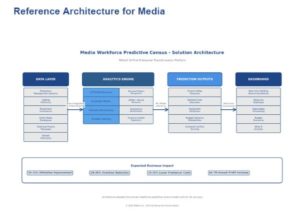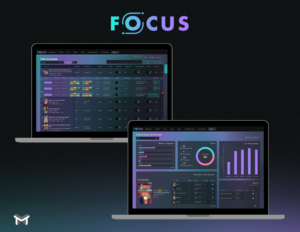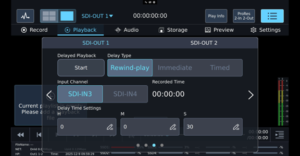Net Insight – Maximizing efficiency and monetization in live sports
Jonathan Smith, Solution Area Expert – Cloud at Net Insight
Live sports provide huge business growth opportunities that linear TV providers cannot ignore. This is reflected by the numbers, with the Premier League being the most-watched league globally, NFL games accounting for 96% of the most-watched 2023 US TV broadcasts and Super Bowl LVIII bringing in a record 123.7 million average viewers. The growth has extended to streaming as well, with the NFL’s first streaming-exclusive playoff breaking records with 23 million viewers.
Live sports can ensure linear viewership rates remain high. Sports fans everywhere consume not only live Tier-1 content but also an increasing number of lower-tier, niche sports. This loyal and growing viewership presents valuable monetization opportunities to sports media companies.
However, to fully take advantage of lucrative live sports opportunities, sports media companies need to ensure their distribution model fits with the content and their overall company business needs and drives efficiencies. With hardware, cloud-based, and hybrid distribution models available, they need to consider which model best aligns with the value of their content and the expected ROI for each destination; there is no one-size-fits-all approach to live sports video delivery.
Hardware-based models boost reliability
As the global demand for live sports rises dramatically, so does the value of sports rights, especially as tech and streaming players are continually entering the market, creating an increasingly competitive landscape. The global media rights for the top 16 sports leagues worldwide are projected to reach $68.8 billion by 2028 and an astounding $90.6 billion by 2033 according to Rethink Research.

On top of sports content becoming increasingly more premium and rights becoming harder and harder to acquire, there is also the challenge of ensuring the reliable and high-quality contribution of live feeds to provide the best viewing experiences, as this will, in the end, maximize efficiency and monetization. Fans will not tolerate missing crucial sports moments due to video quality issues, delays, or buffering, particularly given the wealth of alternative options available in today’s hyper-competitive market; premium content demands robust delivery to realize its monetization potential.
Hardware-based video contribution and primary distribution workflows can offer significant boosts to quality and reliability. They offer ultra-reliable, broadcast-grade media networking across any infrastructure, as well as high-density, high-quality, video compression formats, from visually lossless, low-latency JPEG XS all the way down to H.264. This enables sports media companies to manage and monetize various live events through one, reconfigurable platform that ensures repeatable reliability.
Flexibility and scalability are key to meeting sports media business needs, and modern hardware solutions can promote them both. Being designed to adapt to multiple scenarios, such as needing to set up new services, adjust bandwidth on demand, or expand networks with new locations and services as needed, means they can accommodate the fluctuations and typically changeable returns of the media landscape. Investing in versatile hardware distribution models allows sports media companies to reliably deliver high-quality content, which maintains viewer satisfaction and takes full advantage of monetization opportunities.

This illustrates how, when considering specific business needs such as reliable video delivery across a variable media landscape, one distribution model can prove more advantageous than others.
Cloud-based models unlock scalability and efficiency
Cloud and IP workflows have revolutionized consumer video delivery, allowing sports media to reach huge audiences while using existing connectivity. Using the cloud, companies can scale up and down, swiftly, seamlessly, and efficiently, depending on the specific demands of a live event, eliminating the need for upfront tech infrastructure investment. This allows for experimentation with new markets, content, and destinations at lower initial costs while expanding scalability potential.
While these models are gaining traction in primary contribution and distribution, with Tier 1 live sports, they are mainly used as backup links or second-screen and alternate content. However, for lower-tier events, where the business needs differ, these workflows are becoming the preferred choice, as they provide the flexibility, scalability, and cost-efficiency required by small-scale, more experimental, riskier live sports delivery.
Hybrid models ensure cost-effective distribution
While live sports have never been more popular, not all global live sports markets guarantee revenue growth, making new ventures risky and threatening overall margin. Sports media companies entering unfamiliar markets need to invest cautiously, and this business need can be met by a hybrid content delivery model. This method combines existing infrastructure investments with the flexibility, scalability, and cost-efficiency of internet-primary distribution, enabling sports media companies entering untrodden ground to maximize their investment value.

For media companies looking to secure rights for tier 2 and 3 sports, adopting a hybrid approach can enrich their main broadcasts with extra pre- and post-game content, along with highlights suitable for social media and other platforms. This method helps them connect with niche fan communities, increase revenue opportunities, and enhance engagement across various platforms without needing major infrastructure upgrades.
Given the fast-paced nature of live sports, media organizations must be agile and strategic. Acquiring valuable sports rights is just the start; the key challenge is optimizing returns while mitigating risks. Media companies need a well-thought-out plan for live sports distribution, tailored to the specific needs and risks of each market. By selecting the right mode — be it hardware, cloud, or hybrid — for each situation, they can safeguard their investments and adapt to future changes. In a constantly shifting media environment, flexibility and careful planning are crucial for maintaining a competitive edge.









